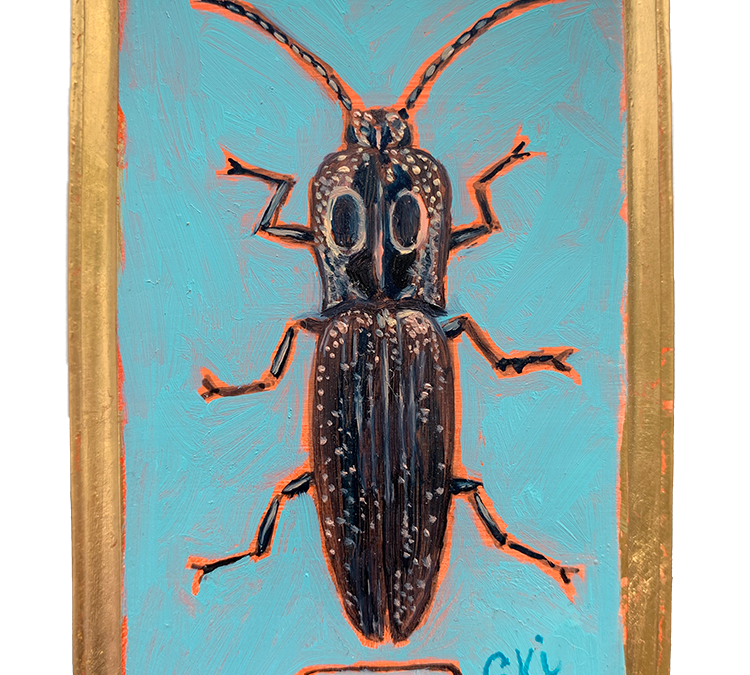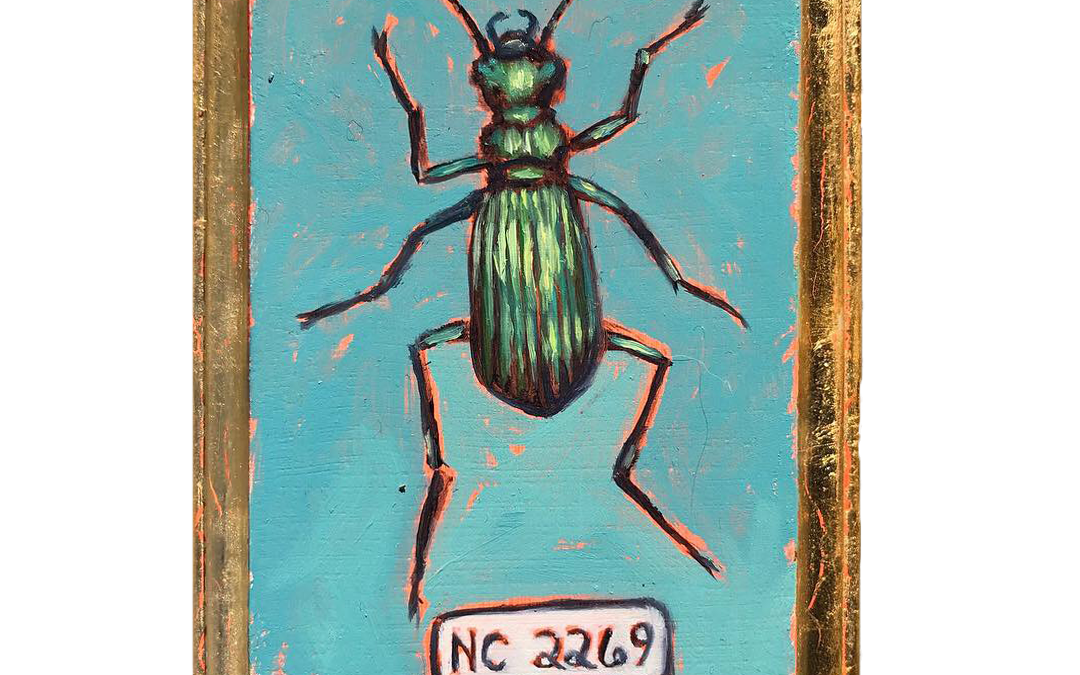
by sarah | Aug 10, 2022 |
Favorite 0 Specimen 1553 | Syrphid Fly [Sphaerophoria philanthus] Syrphid flies exhibit a characteristic flight pattern where they hover and can abruptly change their position. As a result they are called hover flies in Great Britain. SPECIAL THANKSto the Museum of...

by sarah | Jan 10, 2022 |
Favorite 0 Specimen 264 | Tiger Moth [Arctia caja] The word “arctia” is Latin meaning “furry bear.” This refers to the appearance of the caterpillar, also called a woolly bear. The bright colors of this moth are a signal to predators that it has a terrible taste, thus...

by sarah | Oct 12, 2020 |
Favorite 0 Specimen 161 | Eyed Elator Click Beetle [Alaus oculatus] Click beetles are so called because of the audible sound their bodies make when they right themselves after having been flipped over—kinda like a tiddly wink. Large, fake eye spots on their thorax...

by sarah | Oct 26, 2019 |
Favorite 0 Specimen NO. 917 | Saddleback Caterpillar [Calosoma wilcoxi] Adult beetles hunt caterpillars. Several accounts associate the presence of these beetles with the demise of cankerworms and the end of their devastating outbreaks in natural forest settings....

by sarah | Oct 12, 2018 |
Favorite 0 Specimen NC | Peacock Butterfly [Aglais io] These butterflies are located in Europe and the temperate areas of Asia. If the peacock butterfly is attacked, it’ll flash its wings to show its eyespots, and make a hissing noise to scare off predators. SPECIAL...






